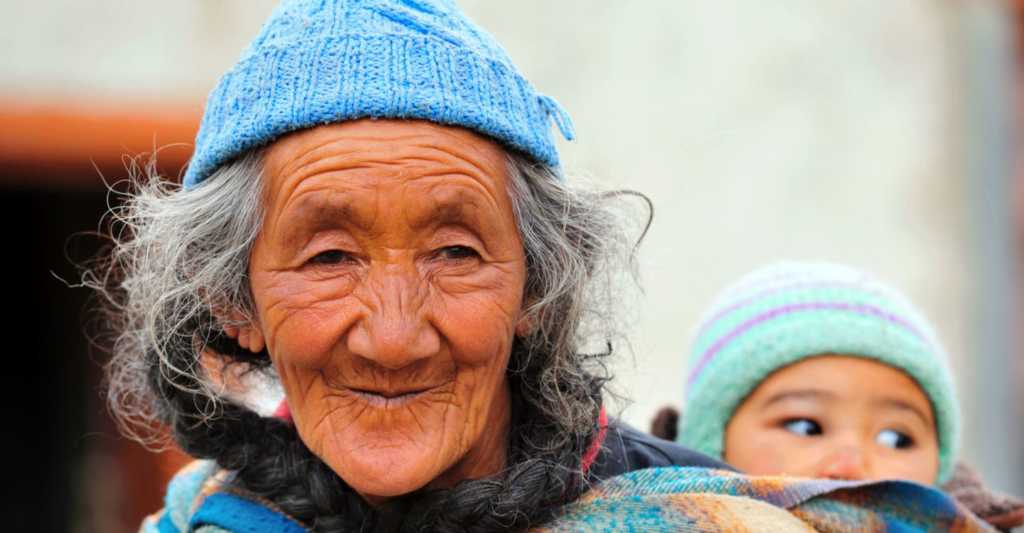Ladakh, the most peaceful and beautiful region of the State of Jammu & Kashmir, happens to be the most neglected part. Seventy years after the Princely State acceded to India, this area lacks reputable educational institutions and still has no University of its own, forcing the young people to leave home to pursue higher studies.
The fiscal control in Kashmir has always resulted in low budget allocation for Ladakh. Despite being constantly overlooked in the dispensation of financial aid by their Kashmiri counterparts, the Ladakhis remain calm and generally blissful never resorting to the kind of violence being witnessed in the Valley. However, in the past few years Ladakhis have started expressing the desire to be separated from the other two regions of the State. Recently, ahead of President Kovind’s maiden visit to Ladakh, this demand cropped up again.
Among the various reasons for this demand is their inability to identify with the Dogras and the Kashmiris culturally and ethnically. Ladakh has a mixed population of Buddhists and Shias unlike the predominantly Sunni Kashmir and Hindu-majority Jammu.
Ladakhis have their own language, cuisine and culture. They look starkly different from the Dogras and Kashmiris and are closer in appearance to the neighbouring Tibetans. Ladakhis are people of Indo-Aryan and Tibetan descent.
In 1834, a valiant Dogra General called Zorawar Singh who belonged to Maharaja Ranjit Singh’s army, invaded & annexed Ladakh to the Sikh Empire. After the defeat of the Sikhs in the Second Anglo-Sikh War, the province of J&K was transferred to Gulab Singh to be ruled under British control. A Ladakhi rebellion in 1842 was crushed and Ladakh was incorporated into the Dogra State of Jammu and Kashmir. The people of Ladakh were never happy with this integration and made several pleas to the Maharaja but to no avail.
Decades later, in 2016 the people of Ladakh submitted a memorandum to PM Modi demanding a Union Territory status for the region. The memorandum stated : “On behalf of the tribal people of Ladakh, the heads representing the Buddhist community, the Shia community, the Sunni community and the Christian community Leh, hereby appeal to Prime Minister Narendra Modi for grant of UT status with legislature for the frontier region.” Underlining their support for the Government of India , irrespective of the political party in power, the memorandum reiterates the unstinting nationalism of the Ladakhi people who have fought back the invading forces of Pakistan and China in 1948, 1962, 1965, 1971 and 1999.
Despite comprising 58.3% out of a total of 101, 387 sq kms of the territory of the State of Jammu & Kashmir, Ladakh has been consistently receiving step-motherly treatment from the Kashmiri-dominated State Government.
The Ladakhis believe that a UT status would guarantee an administrative set-up which would allow them to run their own affairs and safeguard their interests.
The continued violence and unrest in Kashmir has adversely affected the people of the other parts of the State, like Jammu and Ladakh. They are suffering huge economic losses due to the disturbed situation in the Valley thus deepening the regional divide and encouraging the demand for separation of the three regions.
In the words of Sonam Dawa Lonpo, CEC of the Ladakh Autonomous Hill Development Council, “we have been suffering due to the Kashmir situation which adversely affects our tourism as well as the supply of essential goods to the Ladakh region… we want to tell the Centre that it should not link us with Kashmir… we want separation from Kashmir and UT status for Ladakh.”
The Ladakhi people have tolerated the arrogance of the Kashmiri leaders for decades and are now chafing at this imposition that never takes their needs and wishes into consideration. In a 2016 article written for ‘The Daily Excelsior’, Chhewang Dorje, a Research Scholar at JNU, objects to what he calls the ill-informed media debate on the Kashmir problem, reflected in the fact that ‘Chinese-Occupied Ladakh’ (Aksai Chin) is often referred to as ‘Chinese-Occupied Kashmir’. This writer goes on to say that the demand for UT status “emanates from deep-rooted alienation and a widely shared perception among the Ladakhi of having been treated as a colony by the Kashmiri.”
Ethnically different, the Ladakhis have a unique culture, language and cuisine that is distinct from the other two regions of the State. Basically happy and peace-loving, they have never expressed their resentment through the gun. Unhappy with the State Govt’s excessive focus on the Valley, the Ladakhis believe that if restrictions imposed by the State’s Constitution are removed, their region would be able to develop and prosper.
Despite efforts by successive governments, the feeling of alienation has not reduced, so it would be best to heed Ladakh’s long-pending demand for making it a Union Territory. The region has immense geo-political potential and such a status would ensure adequate and direct funding from the Centre, better infrastructure and development. Ladakh is scenic and a beautiful tourist destination, if it were to get half the attention and funds that have been going to the Valley, it would soon fulfil the aspirations of its people.
